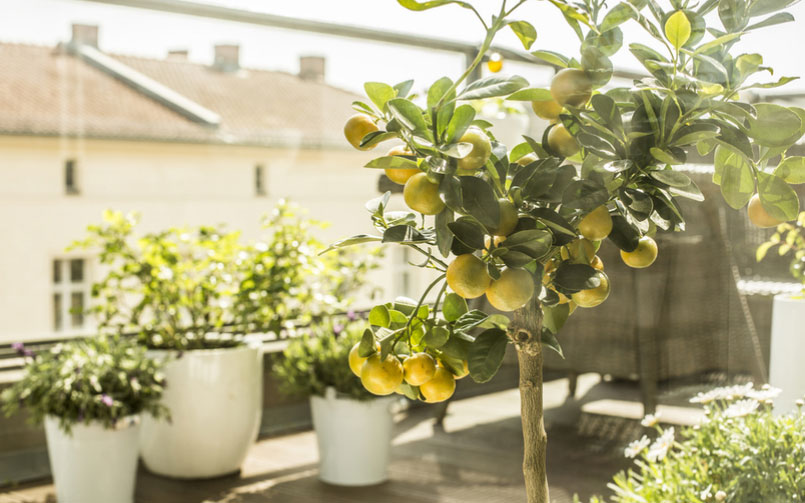Lightweight pots for balconies are key to ensuring a beautiful and safe balcony. After all, balconies are often assumed capable of supporting far more weight than they were designed for. Perhaps you’ve heard the horror stories about balconies collapsing under the weight of too many people or things.
For the most part, small balconies were never intended to hold 10 people, or 15 heavy planters stuffed with large plants or small trees. Too much heavy stuff on your balcony is naturally going to decrease the amount of additional weight the structure can support. Hence, the popularity of lightweight pots for balconies.
The great thing about TerraCast planters is that they are lightweight compared to other similarly-sized planters. In fact, even though our planters can be made to imitate the look of stone and other solid heavy materials, they weigh just a fraction of stone or concrete planters. Shop our wide variety of lightweight pots & planters.
The Real Weight of Planters
Your planters may not seem that heavy when you originally move them out onto your balcony. Yet, keep in mind, a planter is going to increase in weight over time. Right after adding soil, some water, and a plant, a planter is already going to weigh a lot more than it did before.
Can you pick up the planter after it is full? This is a good question to determine just how heavy a planter really is. As the plant grows and more water is added to the soil, the planter continues to gain weight.
How Much Weight Can Your Balcony Really Support?
Each balcony can safely maintain different weights based on how it was constructed, when it was built, and the materials used. You should never base your decision solely on information you read on the Internet. Instead, it’s important to consult with a structural engineer to ensure you do not overload your balcony. Overloading a balcony could result in a safety hazard that puts you or someone else in danger. That being said, generally speaking, balconies are load-rated to 50-100 pounds per square foot. Although, there’s a chance that your balcony was structurally built as a patio, which may change its load rating capacity.
Other factors to consider when determining how much weight your balcony can support:
- Snow–if it snows in your area remember that the weight of snow pilling up on the balcony adds weight.
- For decks, the length of the joists as well as the material joists are made from are important to consider. For instance, Southern yellow pine joists maintain higher load-bearing capacity than Ponderosa pine, which maintains higher load-bearing capacity than cedar. Wood balconies are also constructed from different types of woods, so it’s crucial to know what your balcony is made from to determine weight-bearing capabilities.
- It also matters how far apart joists are positioned, as this alters the deflection value of the joists.
- How old is your balcony? A balcony that is suffering from water damage, dry rot, or any other issue is going to maintain less strength.
Self-Watering Planters for Balconies—Something to Beware Of
Lightweight pots for balconies are the first step to ensuring safety and stability, but how you water your plants can help too. Water is one of the biggest culprits when it comes to breaking down materials commonly used to craft balconies, such as wood. Self-watering planters are great for many reasons, they decrease the risk of root rot, prevent roots from drowning, and can even help save your plants in the event you forget to water them. Although, where balconies are concerned, certain styles of self-watering planters can create more issues. For instance, if you simply cut a hole at the bottom of your planter and let the water seep out, you could be adding water damage to your balcony and decreasing its strength over time.
The solution? Make sure to invest in containers for planters to sit in that will collect excess water and prevent it from leaking out all over your balcony day after day. That way, you can dump the collected water elsewhere away from your balcony. This prevents an accumulation of water that could potentially damage your balcony over time.
We offer a unique self-watering planter that doesn’t simply pour water out the side. Instead, we’ve created an attachable reservoir or chamber that sits below the planter and collects excess water. Whenever the plant is thirsty, it can extend the tips of its roots down into the chamber to extract water as needed. Our customers have told us their 40-60-inch self-watering planters can survive 3-4 weeks before the reservoir requires additional water. So, not only can it help save your balcony, but also, it could help save your plants in the event you forget to water them. Now that’s a win-win!

